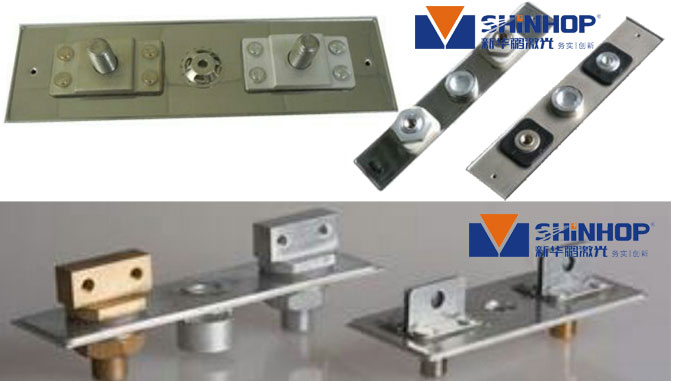-
 +86 0755-89302056
+86 0755-89302056 -
 Building 6, Jingneng science and technology environmental protection industrial park, No. 3, Baolong Second Road, Longgang District
Building 6, Jingneng science and technology environmental protection industrial park, No. 3, Baolong Second Road, Longgang District
How to weld batteries of various materials?
How to weld batteries of various materials?
There are many kinds of materials used in the manufacture of batteries, including steel, aluminum, copper, nickel, etc. These metals can be used to make electrodes, wires or shells, so in the actual welding process, we often encounter the same material or multiple materials The previous welding puts stricter requirements on the welding process requirements, and the technological advantage of laser welding is that it can weld multiple materials and welding between multiple materials.
2. Difficulties of welding process
Power batteries generally follow the principle of "light and thin", and among many materials, only aluminum can trust such requirements. Generally, the thickness of the shell, cover, and bottom is basically required to be below 1.0mm, and the current more advanced manufacturers require it to be about 0.8mm , It can be seen that the aluminum alloy battery shell accounts for more than 92% of the entire power battery.
The difficulties in welding aluminum alloys are reflected in the following points:
1. Aluminum alloy is a non-ferrous metal with relatively high thermal conductivity and is a highly reflective material, so the rate of laser light is relatively low. At the same time, due to the low ionization energy of aluminum, the welding process is not easy to diffuse, making Poor welding stability;
2. The burning of alloy elements during welding reduces the mechanical properties of aluminum alloy welded joints;
3. The pore sensitivity is high during the welding process, and some problems and defects will inevitably appear during welding, the most important of which are pores and hot cracks;
4. The pores produced in the laser welding process of aluminum alloy mainly include hydrogen pores and pores caused by the bursting of keyholes. Because the cooling speed of laser welding is too fast, the problem of hydrogen pores is more serious, and there is another type of gas in laser welding. A hole created by the collapse of a small hole.
5. Hot cracking problem. Aluminum alloy is a typical eutectic alloy. Hot cracks are prone to occur during welding, including weld crystallization cracks and HAZ liquefaction cracks. Due to the segregation of components in the weld zone, eutectic segregation will occur and grain boundary melting will occur. Liquefaction cracks are formed at the grain boundaries, reducing the performance of welded joints.
6. The problem of fire explosion (also called splash). There are many factors that cause explosions, such as the cleanliness of the material, the purity of the material itself, and the characteristics of the material itself. The decisive role is the stability of the laser. Protrusions, pores, and internal bubbles on the surface of the shell are mainly caused by too small fiber core diameter or too high laser energy.
In view of the above problems, finding the appropriate process parameters is the key to solving the problem.
Battery laser welding technology
3. Analysis of welding mode:
1. Pulse mode welding
The pulse waveforms commonly used by pulse lasers include square wave, peak wave, double peak wave, etc. Because the reflectivity of the aluminum alloy surface to light is too high, the appropriate welding waveform should be selected when welding. When a high-intensity laser beam is incident on the surface of the material, 60%~98% of the laser energy on the metal surface will be lost due to reflection, and the reflectivity will vary with the temperature of the surface of the object. Generally, sharp wave and double peak wave are the best choice when welding aluminum alloy. The slow-down part behind these two welding waveforms has a longer pulse width, which can effectively reduce the generation of pores and cracks.
Due to the high reflectivity of aluminum alloy to laser, in order to prevent the vertical reflection of the laser beam from vertical incidence and damage the laser focusing mirror, the welding head is usually deflected to a certain angle during the welding process. The diameter of the solder joint and the effective joint surface increases with the increase of the laser tilt angle. When the laser tilt angle is 40°, the largest solder joint and effective joint surface are obtained. The weld penetration depth and effective penetration depth decrease with the laser tilt angle. When the laser tilt angle is greater than 60°, the effective weld penetration depth drops to zero. Therefore, tilting the welding head to a certain angle can appropriately increase the weld penetration depth and penetration width. In addition, when welding, with the welding seam as the boundary, 65% of the laser welding spot must be welded to the cover plate and 35% of the shell, which can effectively reduce the explosion caused by the cover problem.
Battery welding production line

2. Continuous mode welding
Because the heating process of continuous laser welding is not like pulse cooling and sudden heating, the tendency of cracks during welding is not obvious. In order to improve the quality of the weld, continuous laser welding is used. The surface of the weld is smooth and uniform, without spatter, defect, and no internal defects. Found cracks. In aluminum alloy welding, continuous laser has obvious advantages: compared with traditional welding methods, it has high production efficiency and no wire filling; compared with pulsed laser welding, it can solve its defects after welding, such as cracks, pores, and spatters. Etc., to ensure that the aluminum alloy has good mechanical properties after welding; it will not dent after welding, and the amount of polishing and grinding is reduced, saving production costs. However, because the continuous laser spot is small, the assembly accuracy of the workpiece is higher.
In the power battery welding process, the welding process technicians will select the appropriate laser and welding process parameters according to the battery material, shape, thickness, tensile force requirements, etc., including welding speed, waveform, peak value, welding head tilt angle, etc. to set reasonable welding Process parameters to ensure that the final welding effect meets the requirements of power battery manufacturers.
Battery automatic welding production line
3. Square battery welding
In the welding process of the square battery, the most important process is the encapsulation of the shell cover. The sealing method of the square battery shell is generally to have a rectangular cover plate on the top of the battery with a positive input terminal. The cover plate is inserted into the shell. Flush with the mouth, and then use laser to weld the rectangular gap between the cover plate and the shell by pulse or continuous laser welding, and then seal it.
The welding method of the square battery is mainly divided into side welding and top welding. The main advantage of side welding is that it has less influence on the inside of the cell, and spatter will not easily enter the inside of the cover. Since the welding may cause bumps, which will have a slight impact on the subsequent process assembly, the side welding process has extremely high requirements on the stability of the laser and the cleanliness of the material. The top welding process has relatively low requirements for welding equipment integration due to welding on one surface.
At present, the vertical welding method of power battery is the most popular welding method in the industry. Vertical welding only needs one closing node, which can greatly reduce the side leakage risk of the four closing nodes of the side welding, and is conducive to mass production.
Tel:+86 0755-89302056
+86 0755-85200585
Address:Building 6, Jingneng science and technology environmental protection industrial park, No.3, Baolong Second Road, Longgang District. Shenzhen.China




